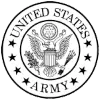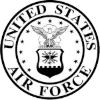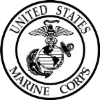Available 24/7
Professional Instruction
Free Training Materials






Course Details
The Integrating On-Premises Core Infrastructure with Microsoft Azure - 10992 course is a 3-day course that is designed to teach students about a variety of components, including Azure Compute, Azure Storage, and network services that customers can benefit from when deploying hybrid solutions.
The term hybrid, in this context, means integrating infrastructure technologies that customers host in on-premises datacenters with Azure IaaS and PaaS services. The course provides an overview of these services, providing the knowledge necessary to design hybrid solutions properly. The course also covers a number of demonstrations and labs which enable students to develop hands-on skills that are necessary when implementing such solutions.
Topics covered in the course include:
- Understanding the core concepts of Azure.
- Explaining the primary methods for integrating an on-premises environment with Azure Virtual Machines and Azure Cloud Services.
- Understanding Azure hybrid networking technologies.
- Understanding the Azure services that provide data storage, management, and analytics capabilities in hybrid scenarios.
- Explaining the use of Azure disaster recovery and business continuity solutions for on-premises environments.
- Explaining how to design and implement cross-premises applications.
- Understanding Azure monitoring and management solutions that offer hybrid capabilities.
Target Student:This course is intended for IT professionals and development operations (DevOps) professionals who are well versed in on-premises technologies and who have some knowledge of cloud technologies but want to learn more about integrating their on-premises environments with Azure.
Students should have the following prerequisite experience:
- Knowledge of on-premises virtualization technologies, including virtual machines, virtual networking, and virtual hard disks.
- Knowledge of network configuration, including TCP/IP, Domain Name System (DNS), VPNs, firewalls, and encryption technologies.
- Knowledge of web applications, including creating, configuring, monitoring, and deploying web applications on Internet Information Services (IIS).
- Knowledge of Active Directory concepts, including domains, forests, domain controllers, replication, the Kerberos protocol, and Lightweight Directory Access Protocol (LDAP).
- Knowledge of Windows Server 2012 and Windows Server 2016 fundamentals.
- Knowledge of Windows PowerShell command-line interface basics.
- Knowledge of cloud computing basics.
Section 1: Introduction to Microsoft Azure
This section starts with a general Introduction to cloud computing, and then focuses on Microsoft Azure and its technologies that offer integration opportunities. It also introduces the most common methods of interacting with Azure, including the Azure portals, Azure PowerShell, Azure Command-Line Interface (CLI), and Microsoft Visual Studio. The module concludes by covering Azure deployment models, which dictate how you provision and manage Azure services.
Topics
Introduction to cloud computing and Azure
Introduction to the Azure deployment models
Lab : Use Azure portal, Azure PowerShell, and Microsoft Visual Studio to deploy and manage Azure resources
Deploy Microsoft Azure VMs by using the Azure portal
Deploy Azure VMs by using Azure PowerShell
Create and Deploy an Azure Resource Manager deployment template
Identify and delete newly deployed resources
Section 2: Integrating with Azure Compute services
This section explores the different compute resources available in Azure in the context of hybrid scenarios. It first explains the differences between Azure Virtual Machines and Azure Cloud Services and how you can use each of them to migrate on-premises workloads. Next, it describes the process of migrating on-premises virtual machines to Azure by using virtual machine images and disks. It also explains the process of extending Big Compute workloads to Azure by integrating them with on-premises high performance computing (HPC) deployments and by using Azure Batch. The module concludes with an explanation on containers and Azure Service Fabric.
Topics
Introduction to Azure virtual machines and Azure cloud services
Migrating workloads to Azure virtual machines by using virtual machine images and disks
Extending HPC workloads to Azure
Integrating compute workloads by using containers and Azure Service Fabric
Lab : Uploading an on-premises virtual disk file to Azure
Preparing for an upload of a virtual disk file to Azure
Uploading a virtual disk file to Azure
Lab : Moving containers between on-premises Hyper V virtual machines and Azure virtual machines
Create a Docker host by using Docker Machine
Deploy a private Docker Registry in Azure
Section 3: Integrating with Microsoft Azure virtual networks
This section introduces the Azure Virtual Network service and its components. It also describes how to implement Azure virtual networks and integrate them with your on-premises computing resources by establishing direct network connectivity between the two environments.
Topics
Introduction to Azure Virtual Network Service
Extending on-premises networks to Azure
Lab : Implementing a point-to-site VPN by using Azure Resource Manager
Preparing a Microsoft Azure subscription for implementing a point-to-site VPN
Completing the point-to-site VPN setup
Testing a point-to-site VPN from an on-premises virtual machine
Section 4: Integrating with Azure Storage and data services
This section starts with a description of Azure Storage types and their capabilities. It then describes Azure Backup, StorSimple hybrid storage solution, Microsoft SQL Server Stretch Database, Azure Data Factory with Data Management Gateway, and Azure Content Delivery Network. It concludes with a detailed walkthrough of the implementation of Azure Recovery Services agent-based and Microsoft Azure Backup Server-based backups.
Topics
Introduction to Azure Storage and data services
Implementing Azure Backup for on-premises workloads
Lab : Implementing the Azure Recovery Services agent-based backups
Preparing your Microsoft Azure subscription for the implementation
Configuring a virtual machine for Azure Recovery Services agent-based backups
Testing the backup of the virtual machine files and folders
Testing the restore of the virtual machine files and folders
Section 5: Designing and implementing Azure Site Recovery solutions
This section presents the main features of Azure Site Recovery and the scenarios it supports. It also describes the planning considerations for Azure Site Recovery, the different types of implementations of Azure as a disaster recovery site for on-premises workloads, and the disaster recovery capabilities that StorSimple offers. You will become familiar with the process of planning Site Recovery deployment and will step through a sample deployment.
Topics
Introduction to Site Recovery
Planning for Site Recovery
Implementing Site Recovery with Azure as the disaster recovery site
Lab : Implementing protection of on-premises Hyper-V virtual machines in Azure by using Site Recovery
Preparing your Microsoft Azure subscription for implementing Site Recovery
Preparing your Hyper-V host for the implementation
Configuring Site Recovery protection of a Hyper-V virtual machine
Section 6: Designing and implementing cross-premises applications
This section presents the most common solutions that facilitate implementation of cross-premises applications, including Azure RemoteApp, Traffic Manager, and Hybrid Connections with the Web Apps feature of Azure App Service. It also describes the process of implementing cross-premises solutions for desktop, web, and mobile apps.
Topics
Introduction to cross-premises application capabilities and their design considerations
Implementing cross-premises solutions for desktop, web, and mobile apps
Lab : Implementing Traffic Manager
Create two instances of an organizational website using the Web Apps feature of Azure App Service
Create and confirgure an Azure Traffic Manager profile
Testing the distribution of traffic targeting the Azure Traffic Manager profile
Section 7: Integrating operations and application monitoring and management
This section presents Azure-based services that deliver monitoring and management functionality for on-premises workloads. These services include Microsoft Operations Management Suite with its Log Analytics, Microsoft Azure Automation with its support for on-premises systems based on Hybrid Runbook Worker functionality, and Visual Studio Application Insights. This section also describes the process of implementing cross-premises Azure monitoring and management solutions.
Topics
Introduction to the cross-premises monitoring and management capabilities of Microsoft Azure
Implementing cross-premises Azure monitoring and management solutions
<strongTopics</strong> Implementing Azure Automation
Create and confirgure an Operations Management Suite workspace
Create and confirgure an Azure Automation account
Configuring an on-premises computer as a Hybrid Runbook Worker
Running a runbook on a Hybrid Runbook Worker and examining the outcome
Please check the course description to find prerequisite information.
MOC On-Demand: 10992-Integrating On-Premises Core Infrastructure with Microsoft Azure
On-Demand Training Course
90/month licence
- 24/7 Access
- Hands-On Practice Exercises
- Free Repeats
- Professional Instruction
Testimonials
This was the class I needed.
The instructor Jeff took his time and made sure we understood each topic before moving to the next. He answered all of our questions, and I don't know about the rest of the students, but was very pleased with this experience.
I finally understand how to use Excel.
-Amanda T (Yale New Haven Hospital).
Great class!
We were able to cover a lot of information in one day without getting overwhelmed.
-Maria R (Microsoft).
Free Repeats
Learn At Your Pace
No Travel
Professional Instruction
Affordable Pricing
Group Discounts

